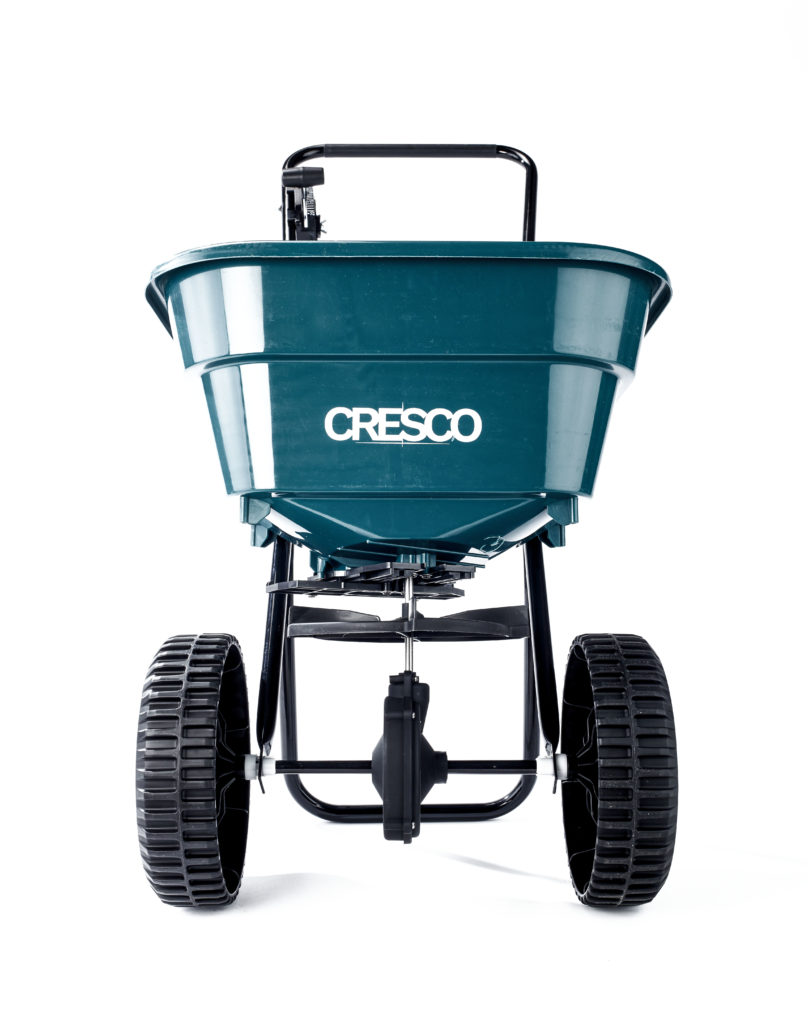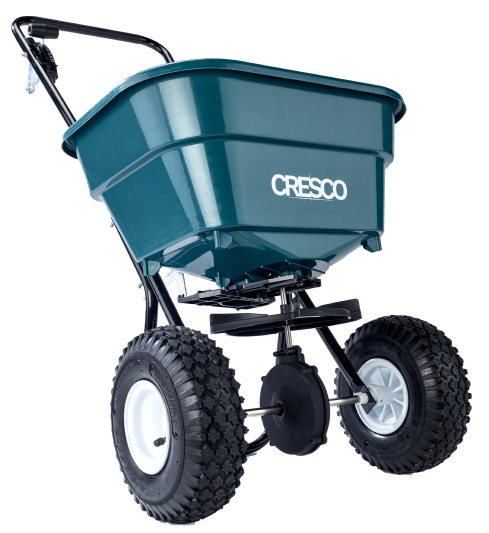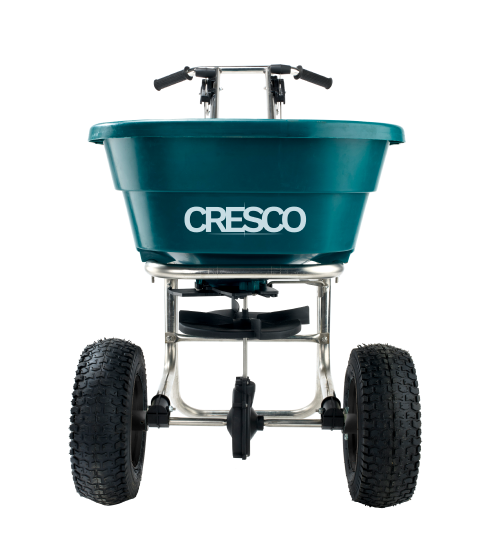Cresco’s new spreader calibration centre
Accurate calibration of pedestrian push broadcast spreaders is a challenging task. DMMP Limited identified a requirement for advanced calibration equipment in the UK to achieve greater accuracy and efficiency when calibrating these types of spreaders.
Traditional methods of calibration are inconsistent due to the many variables encountered when using a pedestrian push broadcast spreader. The lack of specialist equipment in the UK means calibration testing is usually carried out without eliminating the many variables that provide inconsistency and inaccuracy.
DMMP invested in a Calibration Centre to provide ultimate accuracy for fertiliser and broadcast spreader manufacturers. The calibration centre is a specially made and designed test bed specifically for this specialist type of calibration and consists of two items.
The Rolling road
The Rolling road is in essence a miniature of a rolling road used in a garage for vehicle testing.
A spreader is placed onto the two rollers and secured down. The spreader position is adjusted to ensure the impellor is spinning parallel to the ground, so the impellor is level.
The speed of the rolling road can then be set. The DMMP Rolling road can test spread patterns at any speeds between 1.5 and 5.2 mph by simply increasing or decreasing the drive roller speed.
The landing area.
The landing area is the second important part of the calibration centre. It provides a 6 meter wide by 3 metres deep landing area for the materials being spread. It has been coated with a grippy coating to as best possible mirror a surface that granular materials are spread onto. The lading area is coloured white so that the material spread onto it is easily visible.
The landing area is moved from a vertical to a horizontal plain via a winch. Once the calibration test is run for a set time to determine the volume output from the spreader, the material delivered onto the landing area can be accessed. Its spread width determined, its uniformity of pattern visually accessed.
Against the back wall under the collecting area are 6 one-metre-long trays. The landing area is winched up to an angle of approximately 45 degrees so the material on the landing area slides straight down into the trays. The trays can then be individually weighed to determine the contents and so the uniformity of the pattern.
In Summary
The DMMP Calibration centre will accurately calibrate any materials that will spread through a pedestrian broadcast spreader. The systems advantages over conventional calibration are numerous. Spreading when static in a zero-wind environment onto a collecting area means you can see the pattern. This cannot be effectively achieved if the spreader is being manually pushed forward. Speed of travel is critically important and when calibrating the ability to spread at constant exact selected speed is invaluable. Spreaders offering pattern adjustment can be more quickly calibrated and the effects of adjustment are visual. By being able to deposit the collected material in 1 metre trays accurate measuring of each sectors total content can be quickly and accurately determined.
The calibration centre allows evaluation of spreader performance and totally accurate calibration of all types of materials that may be applied by them.
What the Calibration centre can also achieve
The Rolling road can provide durability testing for spreaders to find out the life span of spreader parts, particularly gear boxes. Tests can be carried out under various different load and or speed conditions.
If you have a calibration requirement, please contact us for more details



